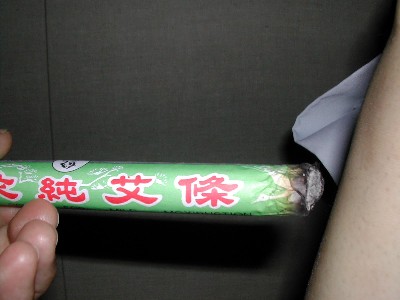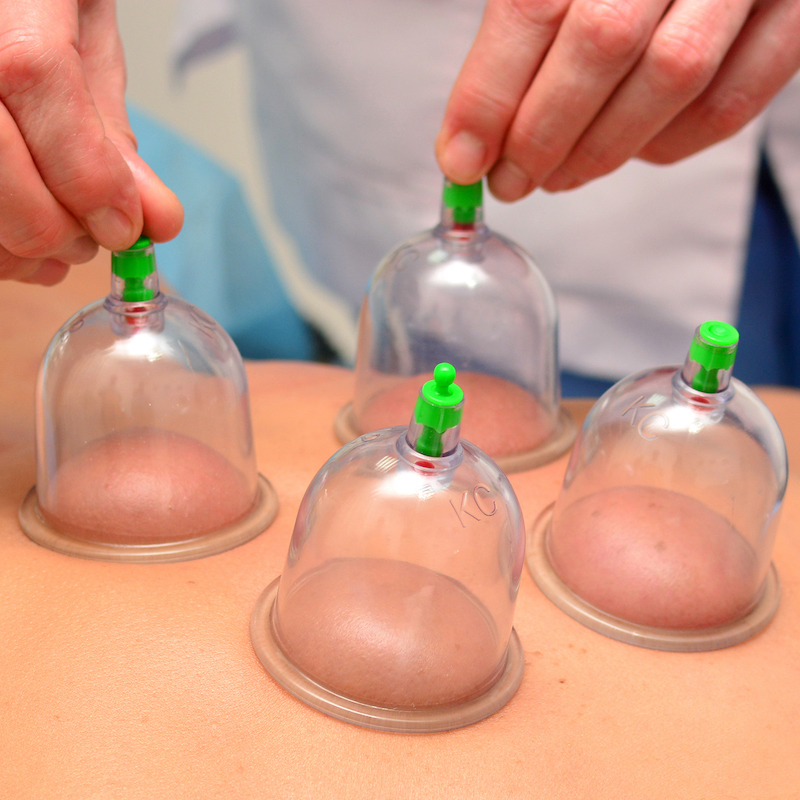
OTHER MODALITIES
Moxabustion
Cupping
Gua-Sha
Shoni-Shin
Tui Na
Shoni-Shin
Besides the more commonly-known arts of acupuncture, herbal medicine, nutritional therapy, and Qi Gong/Martial Arts, several other modalities are part of the Traditional Chinese Medicine practitioner’s arsenal.
 Moxabustion is the use of heat, usually through the burning of herbal materials, to warm the body, nourish Qi, and promote Qi flow. It is generally considered to be an element of acupuncture practice. While the most common form seen in China and the West is the moxa stick (which resembles a cigar), Japanese systems make of small moxa cones that are burned either directly or indirectly on the skin.
Moxabustion is the use of heat, usually through the burning of herbal materials, to warm the body, nourish Qi, and promote Qi flow. It is generally considered to be an element of acupuncture practice. While the most common form seen in China and the West is the moxa stick (which resembles a cigar), Japanese systems make of small moxa cones that are burned either directly or indirectly on the skin.
 Also related to acupuncture, Cupping uses suction, typically with glass cups, to pull on the skin and improve circulation. We use cupping to help relax muscles, fight common colds, and improve blood flow to areas that need it. It often leaves bruises on the skin.
Also related to acupuncture, Cupping uses suction, typically with glass cups, to pull on the skin and improve circulation. We use cupping to help relax muscles, fight common colds, and improve blood flow to areas that need it. It often leaves bruises on the skin.
 Similar to cupping, Gua Sha involves the scraping of muscles with spoons or other tools. It also improves circulation, and is frequently indicated for fevers in children. From the Chinese point of view, it helps to expel wind (an evil pathogen causing colds) from the skin surfaces; Western science has found that the increased blood flow on the surface helps to vent heat. Since this method tends to bruise, some Asian parents have been suspected of child abuse when they were actually using a time-honored and -proven means of reducing fevers.
Similar to cupping, Gua Sha involves the scraping of muscles with spoons or other tools. It also improves circulation, and is frequently indicated for fevers in children. From the Chinese point of view, it helps to expel wind (an evil pathogen causing colds) from the skin surfaces; Western science has found that the increased blood flow on the surface helps to vent heat. Since this method tends to bruise, some Asian parents have been suspected of child abuse when they were actually using a time-honored and -proven means of reducing fevers.
 Literally "Child Acupuncture" in Japanese, Shoni-shin is related to Gua Sha. It uses several tools to stimulate the acupuncture meridians.
Literally "Child Acupuncture" in Japanese, Shoni-shin is related to Gua Sha. It uses several tools to stimulate the acupuncture meridians.
Tui Na, literally meaning “Push and Grab,” is soft-tissue manipulations that include chiropractic-type techniques, massage-like motions, and other manual procedures. It is used for orthopedic disorders.
Does John Kang provide any of these services?
We currently use cupping and moxabustion along with acupuncture. At this time, Tui-Na, Gua-Sha, and other modalities are being used only in limited cases.